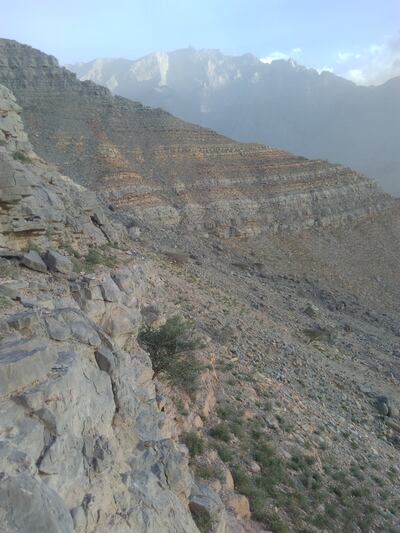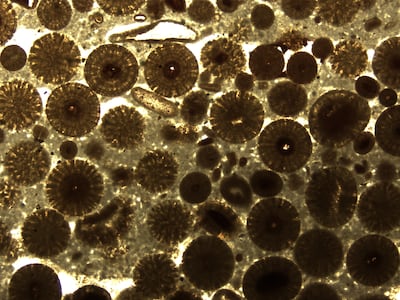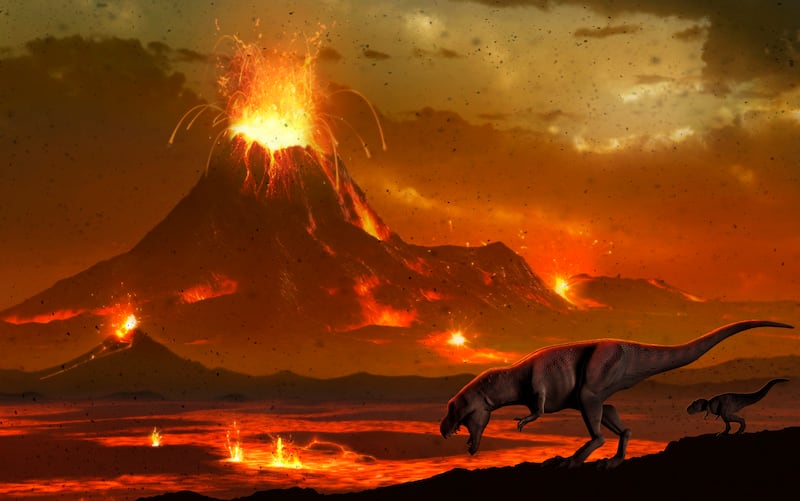More than 200 million years ago, the area we know as the UAE was submerged by the Tethys Ocean and undergoing significant upheaval.
This was a period of mass extinction, one of five to have taken place in the 4 billion years of life on Earth.
Waves of volcanic activity spewed waves of carbon dioxide, wiped out many species and triggered the dominance of the dinosaurs – but also had devastating effects on marine life.
New light has been shed on these events in what is now modern-day UAE in a study by a postgraduate researcher in Sweden.
Johannes Greiff carried out detailed analysis of rocks collected at the Ghalilah formation, a geologically important area of Ras Al Khaimah.
“The marine fauna is particularly affected due to the very nature of the extinction, which was due to volcanic eruptions. There was a severe influx of carbon dioxide. There was ocean acidification,” he said.

The rocks he analysed were collected on a field trip last year by researchers from Lund University in Sweden, which published Mr Greiff's master's thesis.
Detailed chemical analysis of the samples confirmed that the waters above the UAE became much more acidic, a result that ties in with previous studies.
Fossilised remains of actual corals were found in the rocks dating to before the extinction. But the picture was a lot different after the destructive changes to the seawater. Then only tiny grains called ooids were found. These are grains formed from chemicals (calcium carbonate) that were left behind when corals have decayed.
“There’s the transition from this thriving marine ecosystem to this fossil-poor, ooid-rich environment we see after the extinction,” Mr Greiff said.
Among the sea animals known to have perished were the conodonts, early, eel-like vertebrates with big eyes and large jawbones.
Mr Greiff’s analysis also showed that the oceans became starved of oxygen, but the weathering of continental areas released nutrients into their waters that stimulated a renewal of life after the extinction.
By driving three-quarters of land and sea species to extinction, the end-Triassic age opened up ecological niches and allowed the dinosaurs, for example, to rise to prominence on land during the Jurassic era.

Rocks in the UAE from around the time of the end-Triassic extinction are unusually helpful to researchers because in many other locations there is a long gap in the geological record due to tectonic activity such as volcanism.
“This particular part of the Tethys Ocean which the UAE was submerged under was very stable … [this] really simplifies the study of these rocks, which were deposited because they were not altered from their original state,” Mr Greiff said.
“The time after the extinction is exceptionally well-documented [in the UAE], which allows us to study the extinction by proxy.”
Areas underwater at the time of the end-Triassic extinction have been exposed because of sea-level changes and mountain formation, which happened by plates of the Earth's surface moving against each other, although the exact details are subject to debate.
The end-Triassic extinction, meanwhile, has echoes of present-day events. Some researchers and conservationists say the planet is experiencing a sixth mass extinction with habitat loss, climate change and other environmental stresses.
An estimate published last year suggested volcanic activity over 800,000 years during the end-Triassic extinction released about 24,000 gigatonnes of carbon dioxide, where a gigatonne is 1 billion tonnes.
By comparison, carbon dioxide emissions today are about 33 gigatonnes a year – or about 1,000 times the average rate of release by the volcanic activity that caused the end-Triassic extinction.
“That’s of course worrying as we see in the geological record that it’s caused an extinction before and there’s perfect evidence of this in the UAE,” Mr Greiff said.
“We see ocean acidification today and coral bleaching … there are important parallels to be learnt from this mass extinction.”







